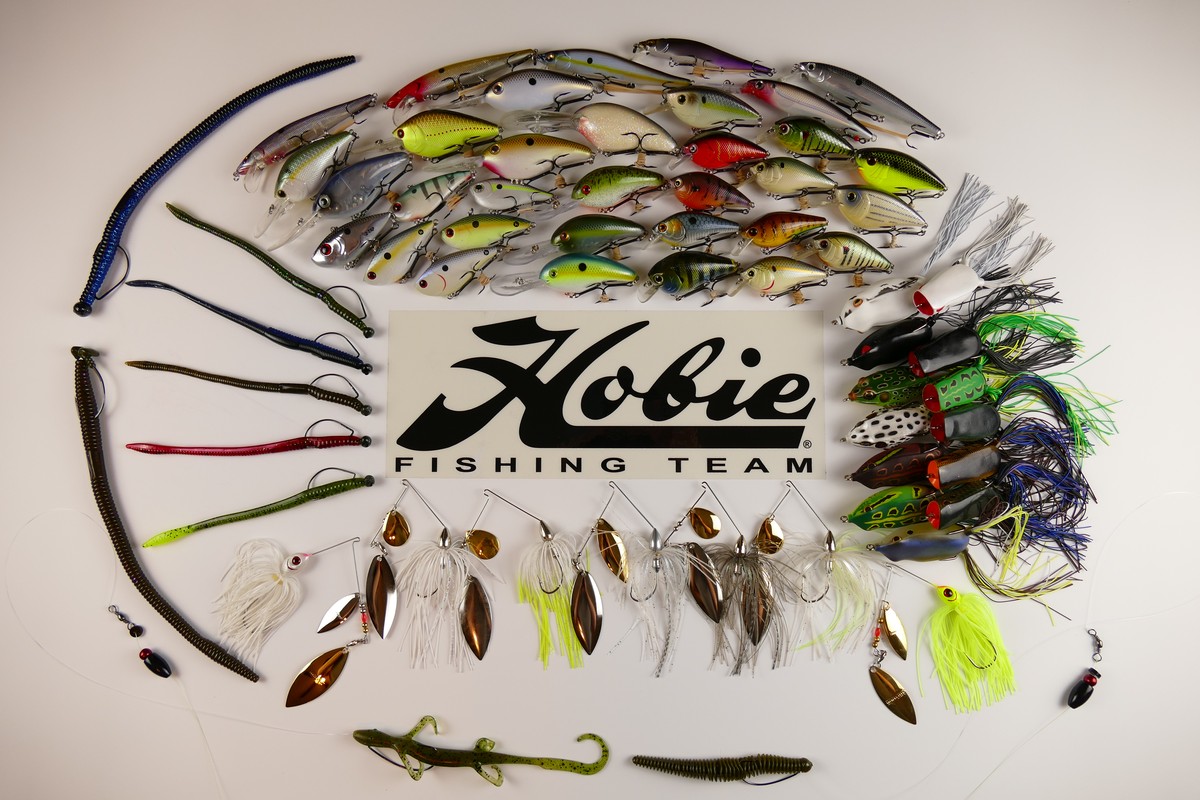
Whittling down my arsenal of kayak friendly fishing techniques to five is like a team captain picking five players, leaving 15 All-Stars wondering why they weren’t selected. No disrespect to the ones that didn’t make this cut. It’s just another reason why kayak fishing is so engaging, exciting, and flat out fun.
Crankbaits
Crankbaits are all about action. They’re overwhelmingly the biggest bass bait family of all, available in all shapes, sizes, colors — billed or lipless styles, jointed or non-jointed bodies, and dive depths from wake producing surface baits to deep water diving baits.
I always travel with square bills, lipless, medium divers, deep divers, and jerkbaits, in a handful of colors depending on type (shad, gill, craw, and chartreuse).
Your rod/reel/line combo depends on the type of crankbait you’re using. Medium to medium heavy composite or graphite rods with moderate action are preferable, in lengths from 6’10” (jerkbaits) to 8’ (deep diving).
High gear ratio reels spooled with fluorocarbon or monofilament are ideal, except for deep diving baits. Then switch to a lower ratio to keep the bait in the zone longer and to minimize fatigue.
Varying your speed, mixing in pauses, and finding cover and structure greatly increases your catch rates. And the correct dive depth can yield great results if you find yourself in a school of suspended fish.
Don’t be afraid to lose a crankbait. There’s plenty of information online about freeing your bait from hangups. Feel your line or bait as it comes in contact, and adjust your retrieve to work through obstacles.
RELATED: Tips and Techniques for Spring Bass
The Shakey Head
The shakey head technique is one of my favorites. Weights range from 1/16 – 3/4 oz. depending on depth and presentation, and can host finesse worms, creature baits, craws, beavers, monster power worms, and almost everything in between.
Catch size ranges from dink to absolute toadage that can’t resist the vertical presentation on the bottom. They can be fished from shallow to deep, but don’t like grass. It’s a simple and fun technique. Just cast, and jiggle on semi-slack line. You can also let it soak, hop it, and drag it back.
Matching gear ranges from medium/fast action spinning rods to medium heavy/fast action casting rods with 6:3:1 to 7:1:1 reels.

Frogs
The hollow body frog is part of the topwater family, with all the adrenaline pumping excitement topwater baits are known for. It’s weedless design is a huge advantage when fishing mats, reeds, and timber. Throw it on a bank and slowly work it to keep the stealth factor high, or beam it into reeds, let it sit, then slowly work it out and wait for the KABLOOSH. Walking a frog at various speeds can also ring the dinner bell.
Remind yourself to let the bass take it before rocking a hard hitting upwards hook set. I recommend trying out both regular and the newer popping style of frogs, which should be fished on heavy/extra fast action rods with fast reels and 30- to 65-pound braid.
Spinnerbaits
Spinnerbaits are a blast when bass are actively chomping, with a wide range of sizes, colors, and blade combinations available. For beginners, I recommend 3/8- to 1/2-ounce spinnerbaits with either double willow, or a willow/Colorado combination. White, white/chartreuse, and chartreuse are productive color profiles.
Spinnerbaits are best over submerged grass, along grass lines, parallel to reeds, in open water, and in the trees/timber, and can be paired with a trailer hook or a small trailer to increase hook ups.
Wind is your friend when it comes to spinnerbaits! I like a medium heavy, fast action rod with a fast reel spooled with 15-pound fluorocarbon line.
The Carolina Rig
The Carolina rig is a favorite for deep water structure. My typical setup consists of a 1/2- to 1-ounce tungsten weight with one (sometimes paired with a clacker) or two beads, a swivel, and a 18”-36” monofilament leader.
Lizards, medium to monster sized ribbon tails, Senkos, creature baits, centipedes, rattle snakes, and flukes are all good c-rig baits.
Sweep the rod, let it rest for a few seconds, reel up the slack and repeat is the money, and always use a sweeping hook set. I like to use a 7’3” – 7’6” medium heavy fast action rod with a fast reel spooled with 20- to 30-pound braid.
Bonus Hobie Tip — On windier days I rarely anchor when fishing the Carolina rig, preferring to pedal into the wind which adds a little more subtle movement to the bait.
Experiment with these baits with the new Hobie Mirage Drive 180. You’ll have a blast, and catch some memorable fish at the same time.
Till next time, tight lines!
Check back weekly for new videos and stories by the Hobie Fishing Top Guns.